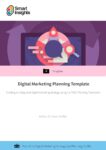How are programmatic marketing and digital display advertising defined and what are the opportunities for all types of business?
In the 15 plus years since the birth of programmatic marketing, it has really delivered on its original promise to be the future of advertising on the web. But what is programmatic marketing today?
Now a fundamental part of most omnichannel marketing strategies, programmatic marketing is a term used to describe the complex use of data and machine learning to enable hyper-segmentation based on your customers' behavior.
The exciting thing about programmatic is that as technology develops, marketers are exposed to more and more opportunities to find and engage their key customers. So, naturally, programmatic marketers will need to stay on their toes to keep up to date with the latest trends and innovations.
Furthermore, with iPhone's incoming changes in privacy policy, it pays to think ahead when planning your advertising activities.
In today's digital era, programmatic marketing continues to grow. In fact, programmatic digital display ad spending in the US is forecast to reach $133.04 in 2023, that's an increase of over a third.
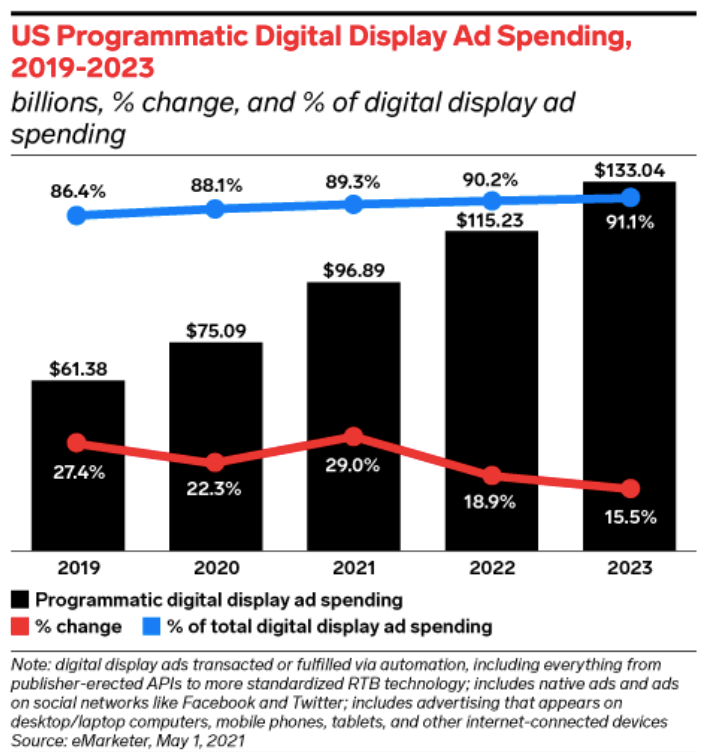
Download FREE Resource – Digital marketing plan template
Our popular marketing planning template built on the Smart Insights RACE planning system.
Access the Free digital marketing plan template
Programmatic growth in the last 5 years alone has been huge. Global programmatic advertising spend is more than double what it reached 5 years ago, forecast at $155 (US) in 2021.
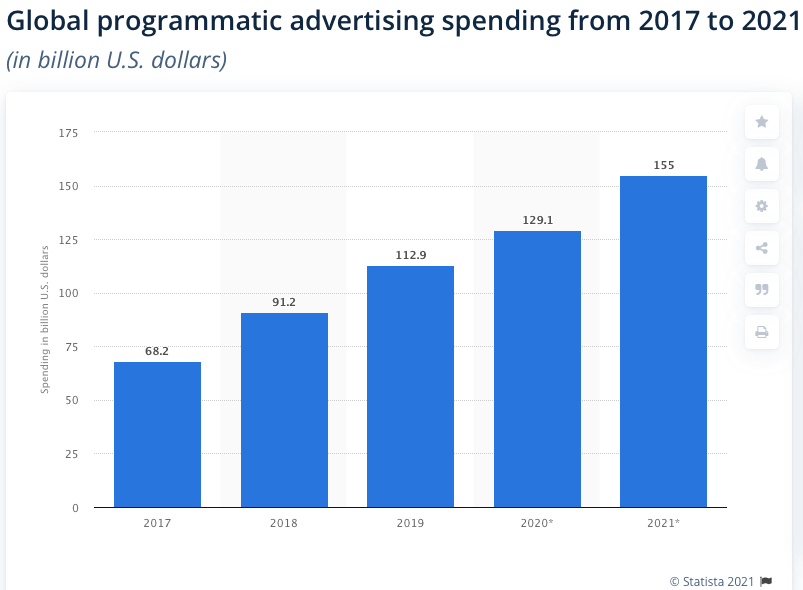
However, as someone who has worked in digital marketing since the mid-1990s, I'll level with you and say I find Programmatic a challenging term to define since it doesn't include what you think it might.
What's the definition of programmatic marketing?
A simple definition of programmatic advertising by Digital Marketing Institute is:
"The use of software to buy digital advertising".
Programmatic marketing means distribution of ads when humans aren't directly involved in process. So, really when we talk about Programmatic Marketing, we will be clearer if we talk about Targeted Programmatic Display Advertising... This is what I try to do... but many don't.
I'd like to keep it simple, but, in the case of programmatic marketing, it helps to understand what it isn't... I'll highlight the questions you should ask when anyone is discussing programmatic research starting with...
Q. So is Programmatic Marketing limited to Programmatic Advertising?
Answer: Yes
We have to be careful here since it refers specifically to paid advertising, not other forms of automation such as web personalization or email marketing which are part of marketing automation. So we can answer this question?
Programmatic has rapidly developed since it's much more efficient for advertisers and media agencies who manage their budgets. Before Programmatic, a publisher had to call an advertiser, negotiate terms for different value of ad inventory, and use a manual insertion order process before buying. Today, ad exchanges have entirely changed the process of selling and buying in programmatic advertising.
Download FREE Resource – Digital marketing plan template
Our popular marketing planning template built on the Smart Insights RACE planning system.
Access the Free digital marketing plan template
Q. Does programmatic include ad spend on Google Ads (paid search)?
Answer: No. Programmatic advertising DOESN'T include all paid search (and classified). This can be confusing since as you'll know Google Ads includes both ads placed in response to queries in search engines AND YouTube Ads and Google's display network.
Q. How do I keep up to date with programmatic advertising best practice?
Smart Insights members are using our Learning Paths marketing training to catch-up on the latest insights into all things digital. Our advanced module 'forecast results and ROI for digital marketing activities' includes marketing tools you can use to optimize your programmatic marketing strategy and tactics.
This module will guide you through the step-by-step process of managing all your key digital marketing channels, including programmatic advertising, as can be seen below.
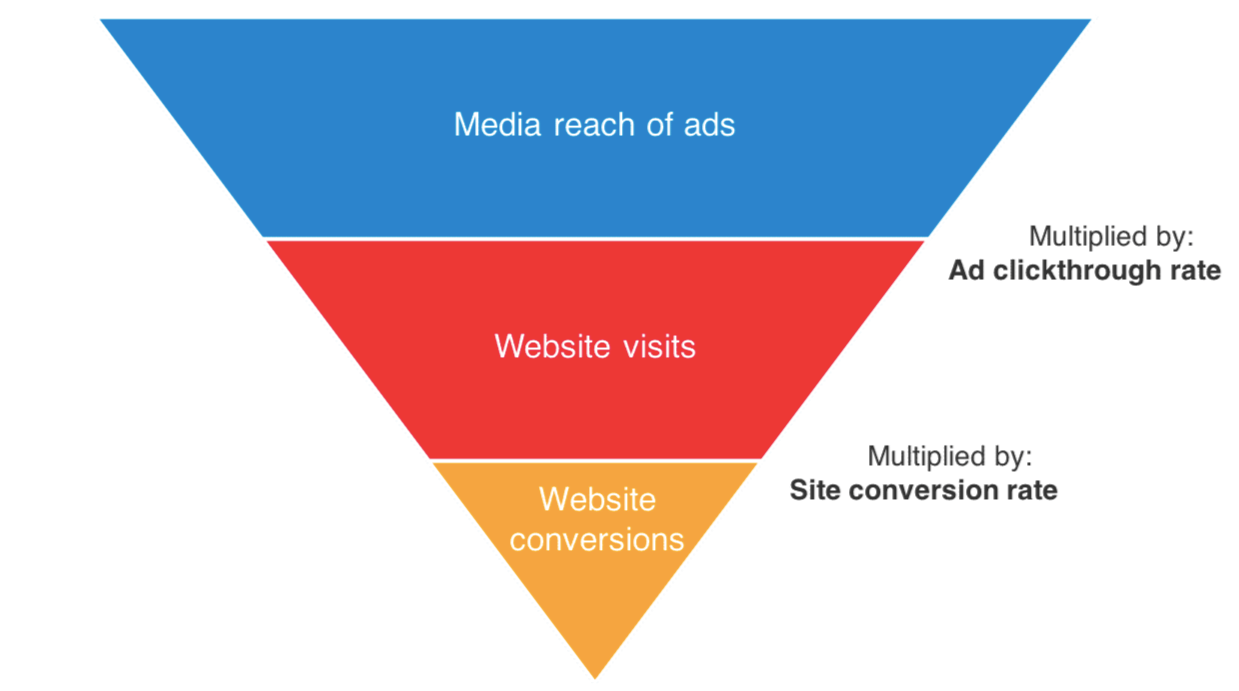
Let's now consider where you can buy programmatic ads with this question...
Q. Does programmatic buying always happen via ad exchanges?
Answer: Yes (although we'll see that some ad exchanges are private)
Ads were (and still are) also sold through ad networks where publishers had no control on price. Today ad exchanges unite publishers, advertisers, agencies, and networks in one place enabling them to sell/buy ad impressions in a fully-automated process.
This visual summarises the process of an ad marketplace which brings together Demand Side Platforms (DSPs) on the buy-side with Sell-side platforms (SSPs) on the right

It's easier to read it from the right, to understand the process, starting with the consumer:
- Consumer loads page on publisher website in their browser, for example, a car magazine website.
- Publisher ad server announces via SSP that ad inventory is available to...
- DSP informs advertisers (for example, a car manufacturer) possibly via an ad network linking to a trading desk who select inventory based on the type of consumer they want to advertise to and the bids they have set
Q. Is programmatic advertising bought in real-time?
Answer: Yes. This is another characteristic of programmatic advertising. It's why the diagram refers to RTB or real-time bidding and increasingly header bidding which is another term that's part of understanding Programmatic display advertising.
So, to extend our definition, we define Programmatic display advertising as:
Programmatic display advertising involves automated bidding on display advertising inventory in real-time, for the opportunity to show an ad to a specific customer type, in a specific context. It doesn't include paid search bidding. Often it involves header bidding to facilitate the real-time bidding process.
Which leads us on to the next question...
Q. Does programmatic involve header bidding?
Answer: Not necessarily, but it's an increasingly common technique used by large advertisers since 2016.
Header bidding involves the website media owner or publisher placing a line of JavaScript in the website’s header. When a page on the site is loaded, the code reaches out to the supported ad exchanges or supply-side platforms (SSPs) for bids before its own ad server is called. Bidding is essentially simultaneous, instead of sequential, and focuses on all available impressions, not just the ones available after direct sales.
The process is explained by this 2015 visual from AdopsInsider. Although the processes has a lot more variables today, the essential journey of the ad from the marketer to the user is the same.
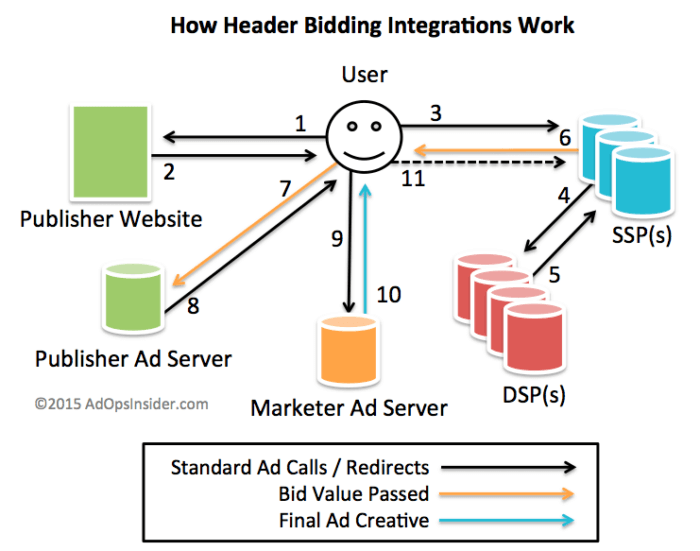
They explain the process as:
- User requests a website
- Header tag script redirects user to one or many SSPs (or DSPs, or Exchanges)
- User calls one or many SSPs in parallel
- SSPs conduct auction with DSPs and internal network demand
- DSPs respond with bids
- SSP determines winning bid value and returns to User
- User passes bid value into ad request and calls Publisher Ad Server
- Ad server determines final line item to serve and redirects User to Marketer Ad Server (let’s assume the ad server determines a pre-bid SSP line item for this example)
- User calls Marketer Ad Server
- Marketer Ad Server returns final creative (via CDN)
- User calls trackback to SSP
To understand how this works, Header bidding Chrome extensions like BidFilter can show bidding times and bids for a publishers website:
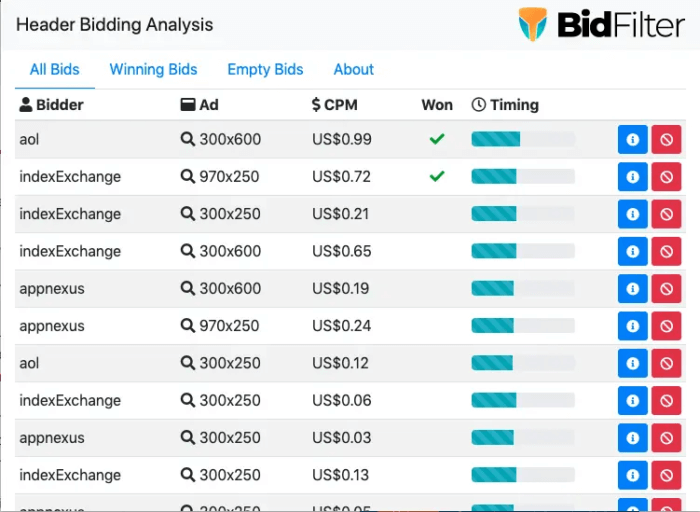
Q. So programmatic is only about buying via ad marketplace platforms via auctions?
Answer: No. This is what is popularly thought of as programmatic, but media can also be bought direct from advertisers and through private marketplaces. As this figure from the IAB Programmatic Handbook (direct download) shows, there are two options on the right, private marketplaces and open Real-time buying exchanges (RTB)
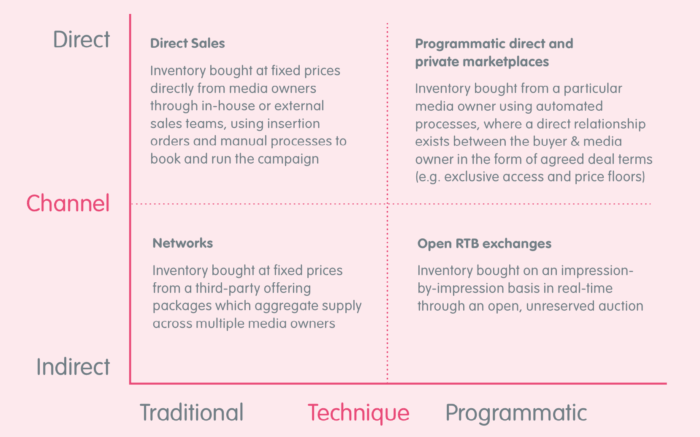
Header Bidding recommends these as the top programmatic ad exchanges for publishers to consider:
- Rubicon Project
- PubMatic
- Index Exchange
- OpenX
- DoubleClick (Google Ad Exchange)
- AppNexus
- Smarty Ads
- Smaato
Google AdX, the largest programmatic ad exchange, conducts a first-price auction and sells display advertising space in real-time. It's the premium version of Google’s AdSense for larger publishers compared to AdSense which is used by smaller publishers.
'Programmatic Marketing' or advertising is a general term, so it's best to divide it based on whether it involves Real-time Bidding (RTB) or not. Often it is only considered to be real-time transactions to bid This summary, also from the Magna Global report is useful to show the differences.
The opportunities of programmatic display?
The only thing standing in the way of increased adoption of programmatic is marketers' lack of knowledge of the process and reluctance to give up previous ways of purchasing ads in favour of the complex yet extremely effective instant, automated bidding process used in programmatic marketing. A little knowledge can go a long way, so we thought an introduction to the concept of programmatic marketing would be useful for digital marketers. But what is programmatic digital marketing?
This post covers just a handful of the benefits and potential opportunities of programmatic marketing. We also have a 'Programmatic Marketing Glossary' to aid readers in their understanding of different terminology and definitions.
We've got marketing solutions to support you in building a strong, data-driven advertising and marketing strategy that is centred around your customers.
Our Campaign Planning Learning Path has marketing tools and templates proven to drive growth across our RACE Framework of reach, act, convert and engage. As you can see, there are so many metrics involved in measuring programmatic marketing, you need to make sure you're tracking the best possible metrics to meet your goals.
The diagram below is taken from our 'set digital marketing goals and objectives' module, you can compare metrics which demonstrate your programmatic marketing activities at each stage of the customer journey.
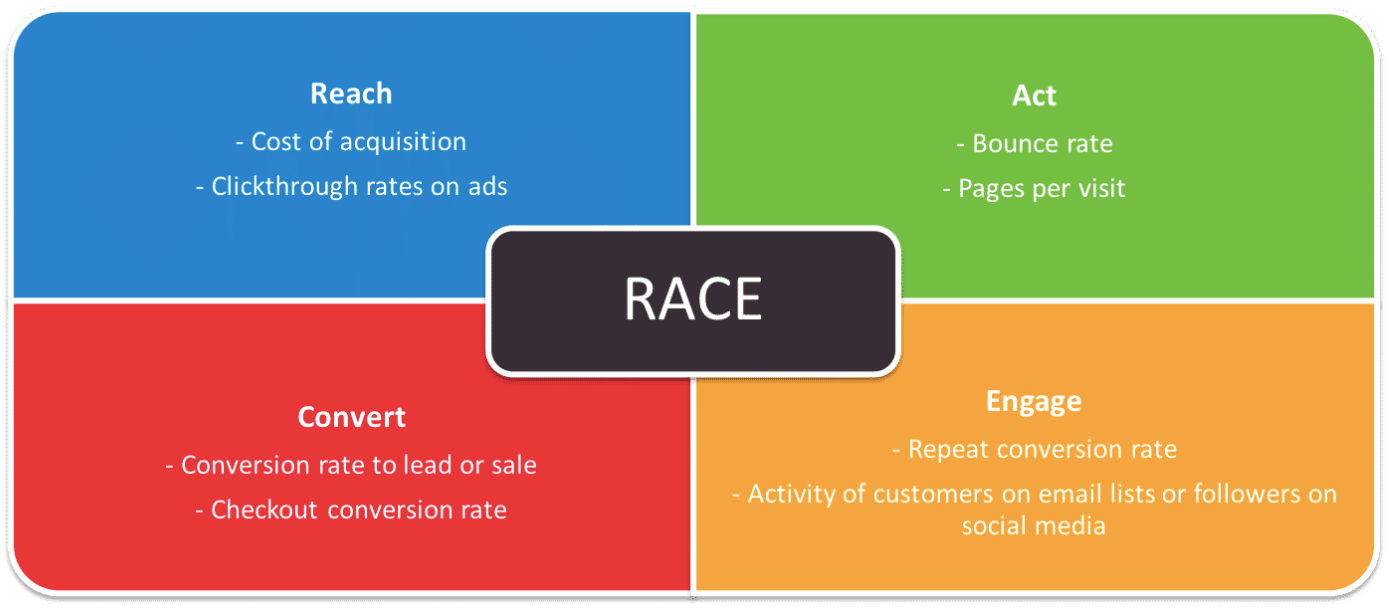
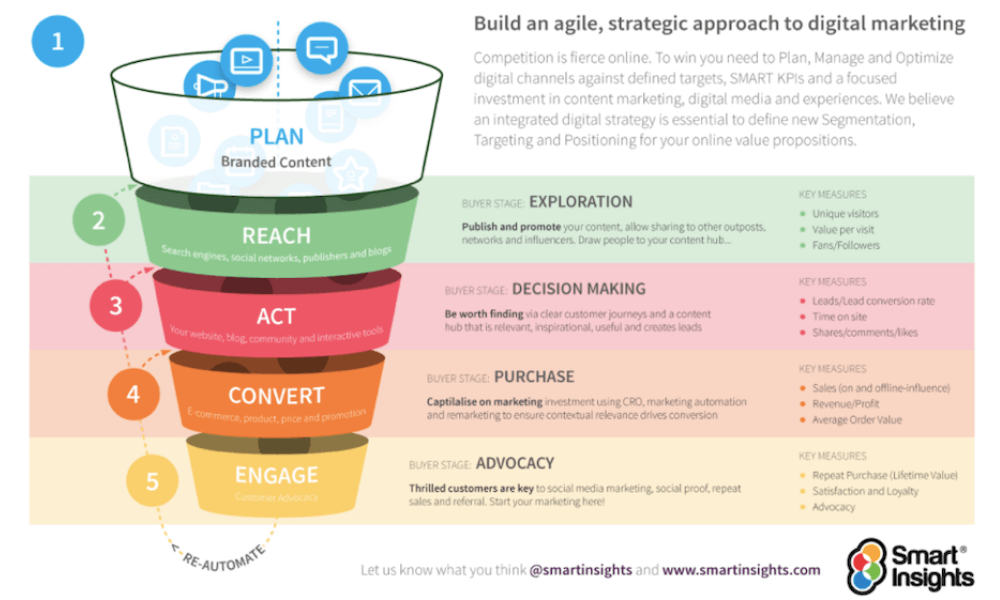
Download FREE Resource – Digital marketing plan template
Our popular marketing planning template built on the Smart Insights RACE planning system.
Access the Free digital marketing plan template
How does Programmatic Marketing work?
When anyone clicks on a web page that has advertising space that is configured for programmatic advertising, the publisher of the page puts up an ad impression for auction in an ad marketplace. The ad marketplace then runs an auction among advertisers interested in displaying an ad to that specific customer that just click on the page. There may be many advertisers competing in this auction, and whichever one ultimately is willing to bid the most wins the auction and then their ad is displayed to the customer when the page loads.
Because the process is automated and the maximum price each advertiser is willing to bid for the impression has already been programmed in, the auction can be completed within the milliseconds it takes for the page to load. Our simple infographic takes you through 6 steps that explain how programmatic marketing works.
What are the advantages of Programmatic Marketing?
Programmatic marketing opens up a series of opportunities, which would not be possible if ad placement was done manually, as it has been done in the past. It allows advertisers to procure digital media without having to pre-negotiate a price, so they pay only for the relevant impression that they actually receive. They can also sign up for a minimum number of impressions or a minimum budget, which makes digital advertising more flexible, and they can buy digital media across publishers, which reduced administration costs.
Download FREE Resource – Digital marketing plan template
Our popular marketing planning template built on the Smart Insights RACE planning system.
Access the Free digital marketing plan template
But the opportunities are much greater than just making ad buying easier and more flexible. Because programmatic marketing means bids are arranged for each individual accessing the site people can be targeted to a far greater extent than before.
Using customer data, Programmatic technology can identify what resonates with each individual and target him or her on the sites on the sites they are most likely to engage with and at the time they are most likely to engage.




